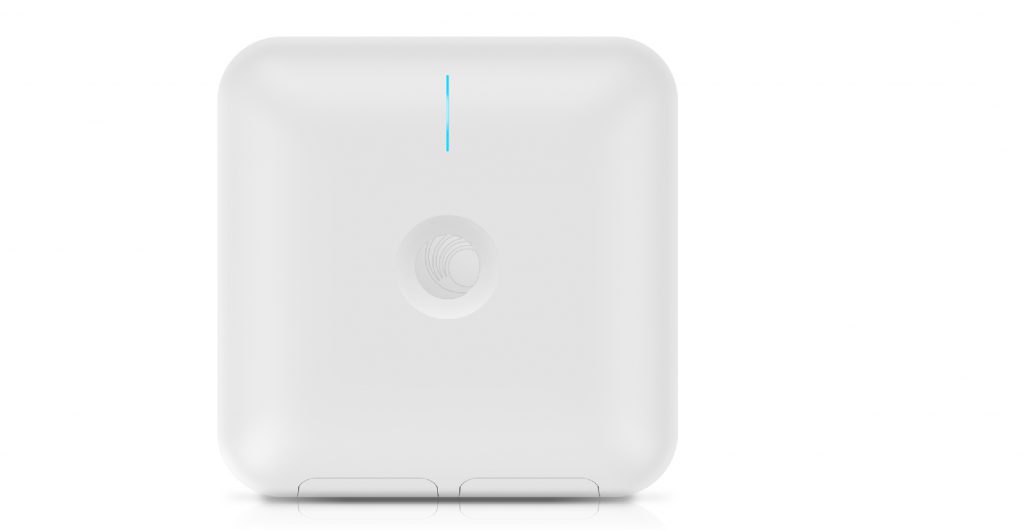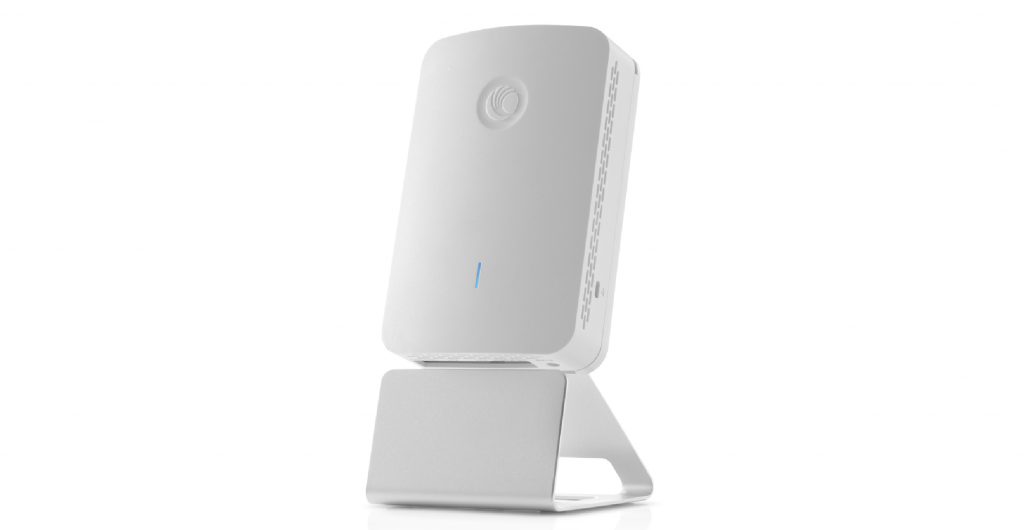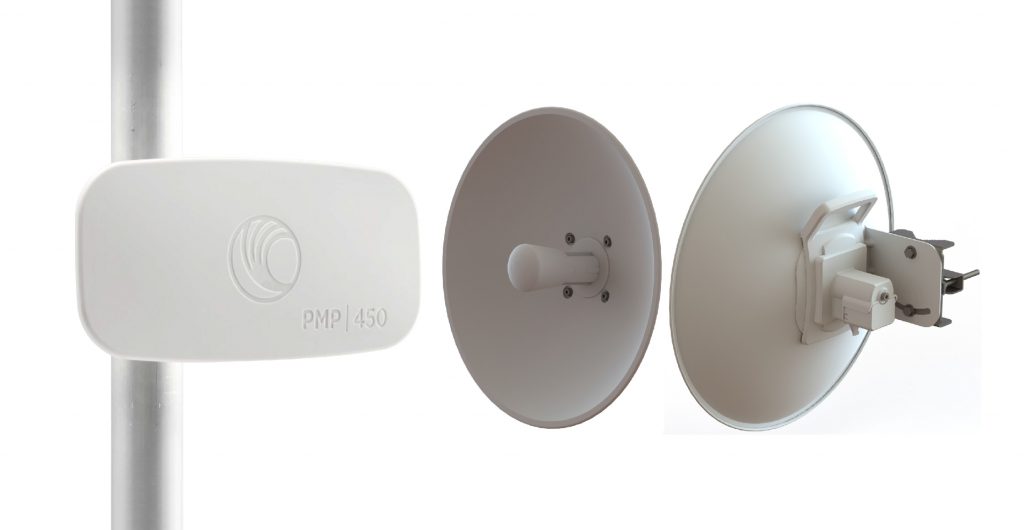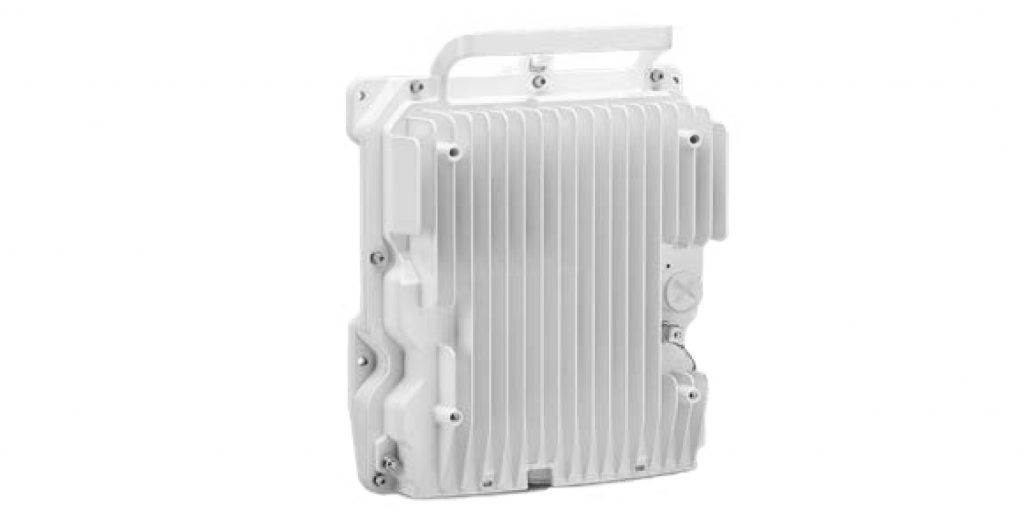Cambium Networks PTP 820G
Licensed Microwave Radio
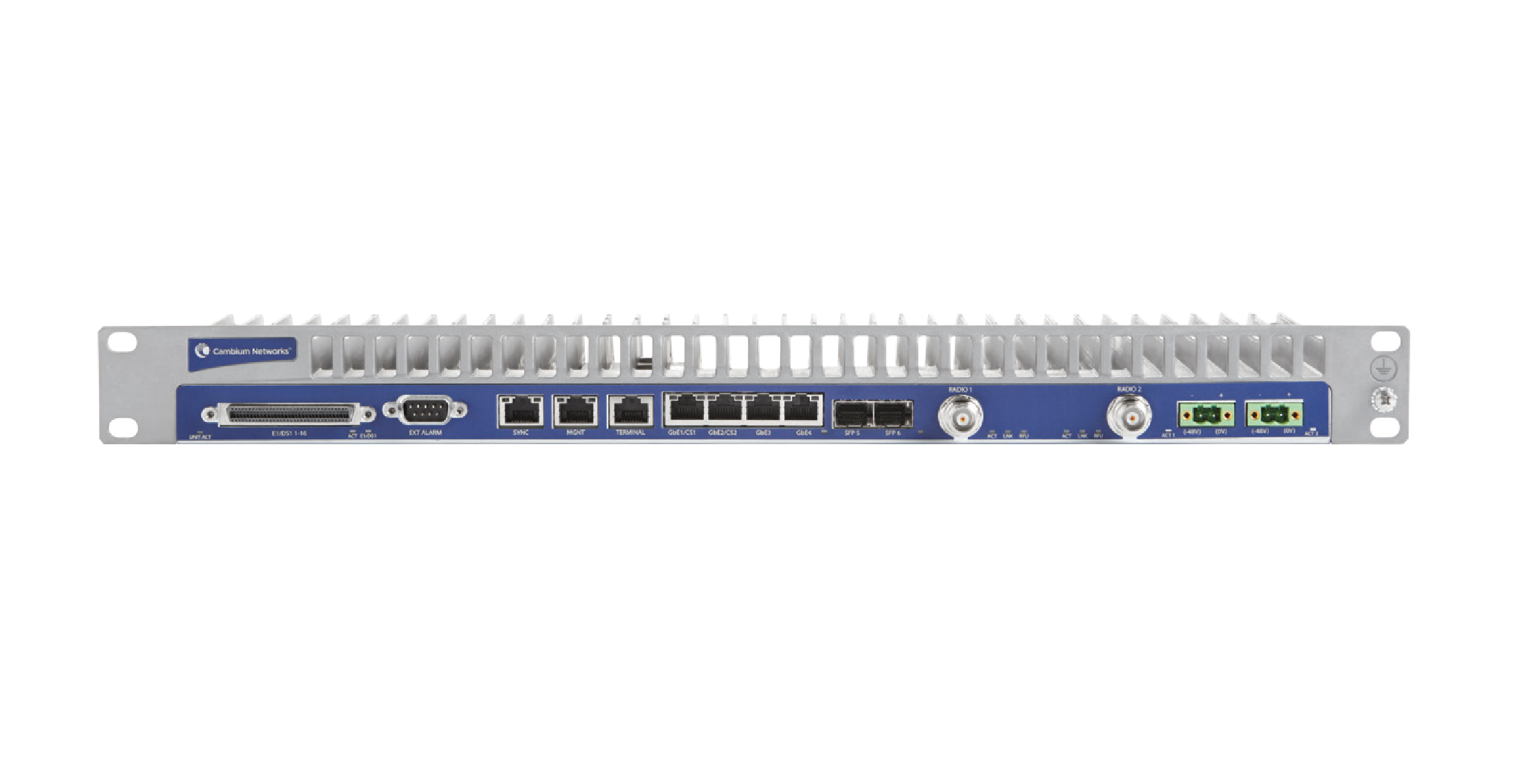
Split-Mount / All-Indoor, Multi-Carrier Options
RADIO
Supported Frequency Range: 6-38 GHz
Configurations: 1+0, 1+1 HSB, 2+0 (E/W), 2+0 XPIC, 2+0 MC-ABC
Radio Features
- Multi-Carrier Adaptive Bandwidth Control (up to 2+0)
- Protection: 1+1 HSB
- High spectral utilization: QPSK to 2048 QAM w/ACM
- XPIC
SYNCHRONIZATION
Synchronization Distribution
- Sync Distribution over any traffic interface (GE/FE)
- Sync-E (ITU-T G.8261, G.8262)
- SSM/ESMC Support for ring/mesh applications (ITU-T G.8264)
- Sync-E Regenerator mode, providing PRC grade (ITU-T G.811) performance for smart pipe applications.
IEEE-1588
- Optimized Transport for reduced PDV
- IEEE-1588 TC
ETHERNET
Ethernet Interfaces
- Traffic Interfaces – 4 x 10/100/1000Base-T (RJ-45) and 2x1000base-X (SFP), 16 x E1/T1 (Optional MDR 69-pin)
- Management Interface – 2 x 10/100 BaseT (RJ-45)
- External Alarm Interface – 1 x DB9
- SFP Types – Optical 1000Base-LX (1310nm) or SX (850nm)
Note: SFP devices must be of industrial grade (-40°C to +85°C)
Ethernet Features
- MTU – 9600 Bytes
- Quality of Service
- Multiple Classification criteria (VLAN ID, p-bits, IPv4, DSCP, IPv6 TC, MPLS EXP)
- 8 priority queues
- Deep buffering (configurable up to 64 Mbit per queue)
- WRED
- Hierarchical QoS – high service granularity*
- P-bit marking/remarking
- 4K VLANs
- VLAN add/remove/translate
- Frame Cut Through – controlled latency and PDV for delay sensitive applications
- Header De-Duplication – Capacity boosting by eliminating inefficiency in all layers (L2, MPLS, L3, L4, Tunneling – GTP for LTE, GRE)
- Network Resiliency – G.8032 and Multiple Spanning Tree Protocol (MSTP)*
- Ethernet OAM – EFM (IEEE 802.3ah), CFM (IEEE 802.1ag), ITU-T Y.1731*
STANDARD
MEF
- Carrier Ethernet 2.0 (CE 2.0)**
Supported Ethernet Standards
- 10/100/1000base-T/X (IEEE 802.3)
- Ethernet VLANs (IEEE 802.3ac)
- Virtual LAN (VLAN, IEEE 802.1Q)
- Class of service (IEEE 802.1p)
- Provider bridges (QinQ – IEEE 802.1ad)
- Link aggregation (IEEE 802.3ad)
- Auto MDI/MDIX for 1000baseT
- RFC 1349: IPv4 TOS
- RFC 2474: IPv4 DSCP
- RFC 2460: IPv6 Traffic Classes
Standards Compliance
- EMC: EN 301 489-4, EN 301 489-1, FCC 47CFR, Part15, Class B
- Safety: IEC 60950, EN60950-1, IEC 60950-1, UL60950-1, CSA-C22.2 No.60950-1, EN60950-22, UL 60950-22, CSA C22.2.60950-22
- Ingress Protection: IEC 60529 IP56
- Operation: ETSI EN 300 019-1-3 class 3.2
- Storage: ETSI EN 300 019-1-1 Class 1.2
- Transportation: ETSI EN 300 019-1-2 Class2.3
TECHNICAL SPECIFICATION
Mechanical Specifications
- IDU Dimensions – 44mm(H), 426mm(W), 180mm(D), 2.5kg
- RFU-C Dimensions – 200mm (H), 200mm (W), 85mm(D), 4kg
Environmental Specifications
- IDU: -5°C to +55°C (-25°C to +65°C extended)
- RFU-C: -33°C to +55°C (-45°C to +60°C extended)
Power Input Specifications
- IDU Standard Input: -48 VDC
- IDU DC Input range: -40 to -60 VDC
- RFU-C DC Input range: -40.5 to -59 VDC
Power Consumption Specifications
- IDU Eth-only with single modem: 23.5W, addition for second modem, 2.9W, additional for 16 E1/DS1, 11w
- RFU-C: 6-26GHz; 1+0 22W; 1+1 39W; 28-38Ghz, 1+0 26W; 1+1 43W



 ไทย
ไทย